calsfoundation@cals.org
St. Edward Catholic Church
St. Edward Catholic Church is part of the second Catholic parish to be established in Little Rock (Pulaski County) and is located on the east side of the city. It began to accommodate increased German settlement in Arkansas during the 1870s and 1880s. Its first building was dedicated in August 1885 as St. Edward Catholic Church in honor of the patron saint of Little Rock bishop Edward Fitzgerald. A new building was built in the early 1900s, and there have been several renovations over the years; it was listed on the National Register of Historic Places in 1982. As more Hispanics moved to central Arkansas in the 1990s, St. Edward attracted these parishioners by giving sermons in Spanish.
Growing oppression of Catholics in Germany under Otto von Bismarck and economic pressures for small farmers and artisans in Germany bolstered the wave of German immigration at the end of the nineteenth century. Arkansas lawmakers passed the “Act to Encourage Immigration to the State of Arkansas” in 1873, which resulted in the dissemination of literature about the state to people in Germany. New railroads between Little Rock and Fort Smith (Sebastian County) also contributed to the migration, as rail companies that owned much of the land offered grants to incoming Catholics; these grants were occasionally negotiated by the Catholic Church. Although most Germans settled in these rural areas along the Arkansas River Valley, many made their way to cities where small German communities were already in place. About twenty German families attended services at St. Andrew’s Cathedral in Little Rock by 1879. In 1881, Little Rock bishop Edward Fitzgerald commissioned German-language sermons to be given at the Cathedral of St. Andrew—the only Catholic church in Little Rock at the time.
As German immigrants began to pour into the state, the need for a new German-speaking parish became apparent. Fitzgerald responded by donating land on East 9th Street (between Sherman and Ferry streets) and money in order to build the church. Construction of the first building began in September 1884. The two-story, 40′ x 90′ wooden building would serve as a church, school, and rectory. The first floor was used for classes and a priest’s residence, and the second floor housed the sanctuary. A parishioner by the name of Casper Kuesener designed and built the church, while the first pastor of the congregation, Father Felix Rumpf, oversaw the construction. The congregation and community raised $3,401.63 to help pay for the building, but it would prove to be insufficient.
The initial building was dedicated in August 1885 as St. Edward Catholic Church in honor of the patron saint of Bishop Fitzgerald. Soon after the dedication, the parish built a teacher’s house, painted interior fixtures, dug a well, installed a fence, and put in place other necessary fixtures—organ, kneelers, stove, etc. By January 1886, the total cost incurred was nearly $9,000, leaving the parish more than $5,000 in debt. The building committee also identified a construction error, which caused the roof to sag and the walls to curve. Iron rods needed to be installed for support. Ultimately, the building served as the church for just over fifteen years before a new one became necessary.
The newly formed Arsenal Park (later MacArthur Park) was located across 9th Street from the church, and so the new building demanded “a more costly, creditable edifice” to match, as stated in an Arkansas Gazette article from November 10, 1901. The church hired Charles L. Thompson to design the building, which he did in the Gothic Revival style. He laid the plan for the church in the shape of a cross, with a 140-foot nave and sanctuary intersected by a north/south transept. Construction of the church began in 1901 and was not completed until 1905, as lack of funding sporadically halted the work. The original design of the church featured spires atop the two front towers, but they were abandoned in order to save money.
After completion, the bell from the original building was placed in the north tower, and the original altars were moved in. Although the building was first dedicated on July 4, 1905, the parish continued to improve the interior for several years, rededicating the church on July 4, 1911. Nearly $60,000 was invested in the interior. Plaster work alone amounted to $32,000. New altars, stained-glass windows, and Stations of the Cross were all crafted in Germany and shipped to Little Rock. Arkansas Electric Company installed around 1,000 electric lights as recompense for an incident in which a street car collided with Father Maurus Rohner’s buggy and seriously injured him. The organ, purchased in 1909, was finished in plaster and cost around $5,500. By the 1930s, the parish found that it owed around $120,000, and many either left the parish or felt little hope of ever being able to pay off the debt.
New leaders devised plans to bolster the parish’s funds, and by the mid-twentieth century, they were able to begin new projects. In 1952, the church employed Steve, Larry, and John Cole to oversee interior redecorations, which included repainting and stenciling the ceilings and arches. A new rectory/meeting hall was completed in 1953. The 1885 church building served as the primary school building on the campus throughout the early twentieth century, having been brick-veneered and remodeled in the early 1920s. However, a new school for first through eighth grades was completed in 1955. After finishing a decade of new projects and celebrating its Diamond Jubilee (seventy-five years), the parish suffered a setback in January 1964 when a fire destroyed the shrine of Our Lady of Perpetual Help, the high altar, many of the primary stained-glass windows, organ pipes, the sanctuary floor, and the basement. Insurance covered much of the repair work, but more debt was incurred in the effort to replace the intricate ornamentation. Architect Leo Hiegel oversaw the restoration, which lasted until August 1965.
The physical church remained unaltered until the interior was repainted and stenciled in 2001 by Becky Witsell, but the 1990s saw some major shifts in the function of the church. Subiaco Abbey in Logan County (formerly St. Benedict’s Abbey) had supplied St. Edward with priests since the founding of the church. This relationship of more than a century ended in 1992, however, as Subiaco had undergone an intense decline in numbers, serving twenty parishes with only forty-three aging priests. Also, as the Hispanic population increased in Arkansas in the early 1990s, St. Edward was designated as the primary church in the area to give sermons in Spanish, which helped grow its Spanish-speaking attendance. Hispanics made up a large portion of its parishioners by the end of the decade and into the twenty-first century. St. Edward Catholic Church was listed on the National Register of Historic Places on December 22, 1982.
On February 28, 2019, the diocese announced that St. Edward Catholic School would close at the end of the school year. In 2023, the diocese opened a Shrine of Divine Mercy at the church; it was the second such shrine in the state, preceded by the establishment of Our Lady of the Ozarks Shrine near Winslow (Washington County).
For additional information:
Arkansas Catholic Newspaper Archive. http://arc.stparchive.com/ (accessed February 9, 2023).
Brister, Louis E. “The Image of Arkansas in the Early German Emigrant Guidebook: Notes on Immigration.” Arkansas Historical Quarterly 36 (Winter 1977): 338–345.
“Cornerstone Will Be Laid Today for the New St. Edward’s Church.” Arkansas Gazette. November 10, 1901, p. 4.
Golden Jubilee St. Edward’s Church: Little Rock, Ark. 1884–1934. Little Rock: Paragon Printing Co., 1934. On file at the Butler Center for Arkansas Studies. Central Arkansas Library System, Little Rock, Arkansas.
Lockwood, Frank E. “Shrine Set to Open at St. Edward Church.” Arkansas Democrat-Gazette, June 3, 2023, pp. 4B, 5B. Online at https://www.arkansasonline.com/news/2023/jun/03/second-catholic-shrine-in-arkansas-set-to-open-in/ (accessed June 5, 2023).
St. Edward Catholic Church and School. https://stedwardchurchlr.com/ (accessed February 9, 2023).
“St. Edwards [sic] Church.” National Register of Historic Places registration form. On file at Arkansas Historic Preservation Program, Little Rock, Arkansas. Online https://www.arkansasheritage.com/arkansas-historic-preservation-program (accessed February 9, 2023).
Wolfe, Jonathan James. “Background of German Immigration.” Arkansas Historical Quarterly 25 (Winter 1966): 354–385.
David Collins
Arkansas Historic Preservation Program
 Early Twentieth Century, 1901 through 1940
Early Twentieth Century, 1901 through 1940 Historic Preservation
Historic Preservation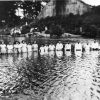 Religion
Religion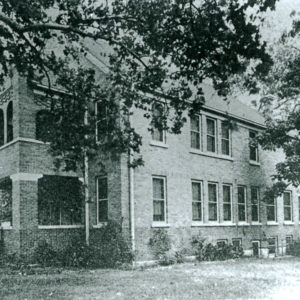 Sisters' School
Sisters' School 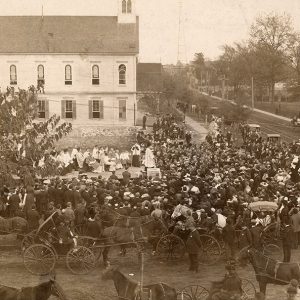 St. Edward Catholic Church
St. Edward Catholic Church 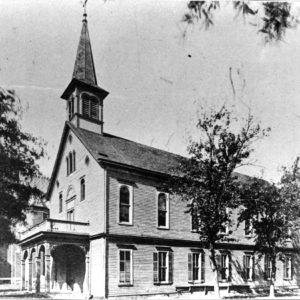 St. Edward Catholic Church
St. Edward Catholic Church 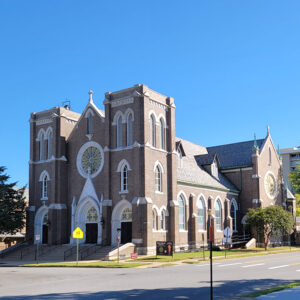 St. Edward Catholic Church
St. Edward Catholic Church 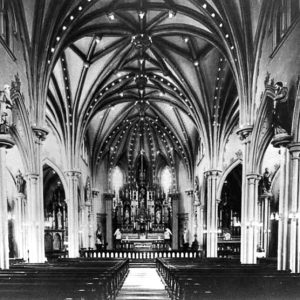 St. Edward Catholic Church Interior
St. Edward Catholic Church Interior  St. Edward Church Annex
St. Edward Church Annex 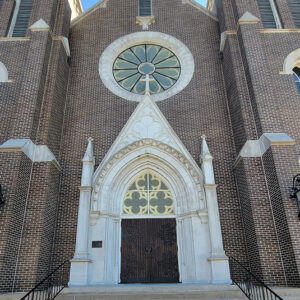 St. Edward Church Entrance
St. Edward Church Entrance 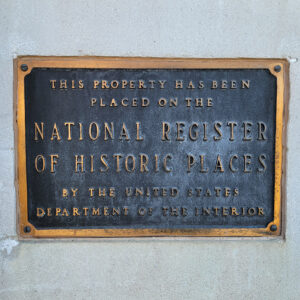 St. Edward Church Plaque
St. Edward Church Plaque  St. Edward Church School
St. Edward Church School  St. Edward First Communion
St. Edward First Communion 




Comments
No comments on this entry yet.